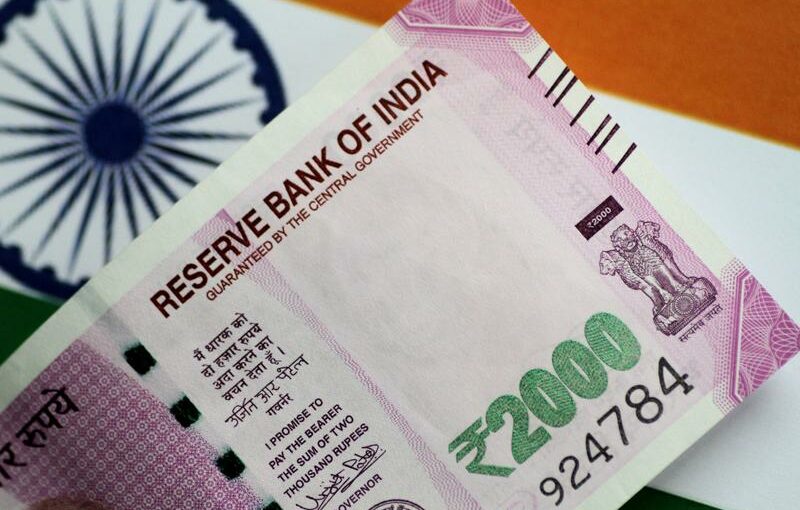MUMBAI (Reuters) – The Indian rupee’s near-term fortunes may directly be influenced by the Reserve Bank of India’s intent on preventing any further depreciation in the currency as the surge in COVID-19 cases hits jobs and growth, economists and traders said.
The rupee has already lost 2.6% against the dollar so far this month, putting it on the cusp of marking its worst month, since the pandemic hit the country early last year.
“INR is likely to trade with a depreciating bias on the back of a stronger dollar, relatively weaker EM currencies, muted EM inflows and rising COVID-19 cases in India,” said Sameer Narang, chief economist at state-run Bank of Baroda.
A fortnightly Reuters poll showed bearish bets on the rupee climbed to their highest since last April, as the surge in infections has halted what had been seen as a promising growth story in the region.
The rupee closed at 75.01 to the dollar, and traders say they expect it to stay in the 74.50 to 76.00 range against the greenback in the near-term.
India reported 332,730 new daily cases on Friday, the highest single-day tally anywhere globally.
Rising cases have been one of the main factors behind the recent fall in the rupee, but the RBI’s decision to commit to large bond purchases has added to downside momentum.
The RBI has committed to buying 1 trillion rupees worth bonds in the April-June period in its effort to temper the rise in bond yields to help the government borrow its budgeted 12.06 trillion rupees from the market at low interest rates.
It said it would do more going forward, and this would be alongside its regular open market bond purchases and special OMOs – the simultaneous sale and purchase of government securities over different tenors – the equivalent of the U.S. Operation Twist.
“We also believe the RBI’s policy priority of keeping a lid on G-sec (government bond) yields is more pressing than arresting INR depreciation,” economists at ANZ wrote.
The road ahead for the rupee is likely to be complicated by rising inflation and faltering economic fundamentals.
The RBI has stressed it intervenes to smooth volatility in the forex market and does not target any level on the currency. It aggressively bought dollars last year as foreign investors flocked to India but economists are unsure if the intervention on the downside will be as strong.
A weaker rupee helps exports and several believe the RBI may prefer it, and will hence influence how much further the rupee weakens, say economists.
Negative real interest rates, potential GDP and earnings downgrades and rising inflation have also become headwinds for the currency, said economists.
“The INR could continue to weaken in the absence of a strong anchor from the central bank,” according to ANZ.
Source: Read Full Article
